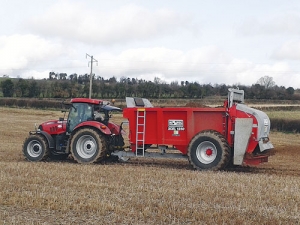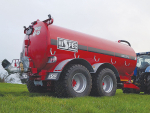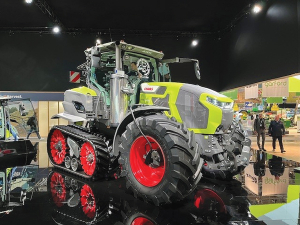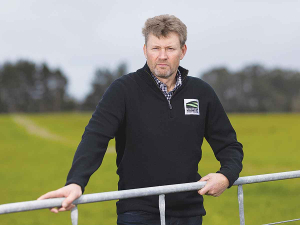Everyone knows the old Rota spreaders, and most have seen the moving floor manure spreaders – the first ideal for the sloppy stuff and the second best suited to the drier stuff.
Both had drawbacks: the Rota spreader was slow to start and inconsistent throughout the load, and the moving floor machines were fragile when it came to foreign objects.
Now the crafty Irish have a design taking the best of both, and it could turn out to be a universal machine.
The Hi-Spec Xcel 1250 spreader, imported by Giltrap AgriZone, Cambridge, takes a body with a moving floor, which combines with a rotary shredding rotor – akin to the Rota spreader – and delivers the material onto twin spreading discs rotating at 520rpm.
The transverse mounted chopping rotor carries 22 heavy duty 16 x 48mm (grade 10) chains, which in turn carry 12mm Hardox flail heads, carried under a 4mm Hardox hood, that shred all material to an even consistency and ensure no lumps are deposited onto the spreading rotors.
The machine will spread all types of materials including burnt lime, digestates and cakes; a spreading width of 24m can be achieved depending on material. It's built for durability and weighs 6800kg.
Capacity is 12 tonnes heaped and a typical discharge time is 3-5 minutes. Over the floor of the body the load is moved rearwards to the shredding rotor by four 14 x 40mm floor chains, fitted with slats, each rated to 25t capacity and with individual tensioning to the front of the machine.
Drive is by a hydraulic motor with overload protection and variable speed to adjust the speed of the load. Chains are auto-oiled and grease nipples are grouped in banks for easy daily maintenance.
Drive to the shredding rotor and spreading vanes is by gearboxes from industry specialist Comer (rated to 200hp).
At the rear, a hydraulically activated, vertical slurry door can be used to regulate flow of 'sloppy' material to the shredding rotor, and at the spreading discs an option of lighter vanes can be specified for low density materials.
All painted components are shot-blasted and two-pack epoxy paint finished; galvanised steel is used extensively for the lower chassis, access ladder and other components.
Typical all-up weight (loaded) is around 18.5t, running on 580-70 R38 radial tyres for lower rolling resistance – making the spreader easy to pull – and less compaction on the paddock. The standard package also includes commercial spec axles with hydraulic brakes.
For even greater accuracy, factory fitted weigh cells can be specified, along with the further option of GPS application mapping giving evidence and proof of placement.


















